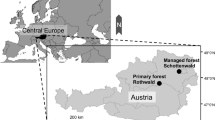Abstract
Poisonings of granivorous birds by cereal seed treatments have been reported in the UK, but the true frequency of poisonings is unknown. We aimed to measure the rate of mortality due to poisoning by seed treatments in woodpigeons (Columba palumbus) in an area of East Anglian farmland where the risk from these compounds appeared high. Woodpigeons were fitted with temperature-sensing radio-tags and monitored daily during the winters of 1994/95 and 1995/96. Birds’ deaths were detected and attempts made to retrieve carcasses for post-mortem examination including, where possible, analysis for pesticide residues. Ninety-one woodpigeons were monitored. Eleven birds died, but the causes of their deaths were uncertain: one contained a low residue of insecticide and in the other ten cases, no carcass was recovered, so no analysis was possible. Therefore, the number poisoned by pesticides could lie anywhere between zero and eleven. During 1994/95, estimated mortality ranged from 0% to 52%, depending on how many (if any) of the 11 casualties were poisoned. During 1995/96 there were no casualties. Using conservative diagnostic rules for classifying birds as poisoned by OP seed treatments, no link was found between the availability of treated fields in the study area and the rate of poisonings, and there were no significant differences between the two study years. For reasons discussed in the paper, true mortality resulting from exposure to insecticide seed treatments was considered likely to lie in the range 0–5%.


Similar content being viewed by others
References
Armitage P, Berry G (1987) Statistical methods in medical research. Blackwell, Oxford
Baillie SR (1993) The implications of studies of the reporting rates of ringed birds for the interpretation of results from the WIIS. BTO Research Report no. 117, British Trust for Ornithology, The Nunnery, Thetford, Norfolk IP24 2PU, UK
Clout MN, Karl BJ, Pierce RJ, Robertson HA (1995) Breeding and survival of New Zealand Pigeons Hemiphaga novaeseelandiae. Ibis 137:264–271
Cooke AS (1988) Poisoning of woodpigeons on Woodwalton Fen. In: Greaves MP, Smith BD, Greig-Smith PW (eds) Field studies for the study of environmental effects of pesticides. British Crop Protection Council, Thornton Heath, UK, pp 297–301
Davis PG (1991) Trapping methods for bird ringers. British Trust for Ornithology, Thetford
De Leeuw J, Gorree M, de Snoo GR, Tamis WLM, van der Poll RJ, Luttik R (1995) Risks of granules and treated seeds to birds on arable fields. Leiden University, Leiden, p 131
Dewar AM, Asher MJC (1994) A European perspective on pesticide seed treatments in sugar beet. Pesticide Outlook 5:11–17
Fletcher MR, Hunter K, Barnett EA (1995) Pesticide poisoning of animals 1994: investigations of suspected incidents in Great Britain. MAFF Publications, London
Fletcher MR, Hunter K, Barnett EA, Sharp EA (1996) Pesticide poisoning of animals 1995: investigations of suspected incidents in Great Britain. MAFF Publications, London
Fletcher MR, Hunter K, Quick MP, Grave RC (1992) Pesticide poisoning of animals 1991: investigations of suspected incidents in Great Britain. MAFF Publications, London
Fryday SL, Hart ADM, Langton SD (1996) Effects of exposure to an organophosphorus pesticide on the behaviour and use of cover by captive starlings. Environ Toxicol Chem 15(9):1590–1596
Garthwaite DG, Thomas MR, Dawson A, Stoddart H (2003) Pesticide Usage Survey Report 187: arable crops in Great Britain 2002. Defra Publications, London
Greig-Smith PW (1988) Wildlife hazards from the use, misuse and abuse of pesticides. Aspects Appl Biol 17:247–255
Hart ADM (1990) The assessment of pesticide hazards to birds: the problem of variable effects. Ibis 132:192–204
Hart ADM, Clook MA (1994) Research-based improvements in the regulation of hazards to wildlife from pesticide seed treatments. In: Martin T (ed) BCPC Monograph no. 57: seed treatment: progress and prospects. British Crop Protection Council, Thornton Heath UK, pp 449–454
Hart A, Fryday S, McKay H, Pascual J, Prosser P (1999) Understanding risks to birds from pesticide-treated seeds. In: Adams N, Slotow R (eds) Proceedings of the 22nd International Ornithological Congress, Durban. Birdlife South Africa, Johannesburg, pp 1070–1087
Hegdal PA, Blaskiewicz RW (1984) Evaluation of the potential hazard to barn owls of Talon (brodifacoum bait) used to control rats and house mice. Environ Toxicol Chem 3:167–179
Heisey DM, Fuller TK (1985) Evaluation of survival and cause-specific mortality rates using telemetry data. J Wildlife Manage 49:668–674
Hunt KA, Bird DM, Mineau P, Shutt L (1992) Selective predation of organophosphate-exposed prey by American kestrels. Anim Behav 43:971–976
McAuley DG, Longcore JR, Clugston DA, Allen RB, Weik A, Williamson S, Dunn J, Palmer W, Evans K, Staats W, Sepik GF, Halteman W (2005) Effects of hunting on survival of American woodcock in the Northeast. J Wildlife Manage 69(4):1565–1577
McKay HV, Prosser PJ, Hart ADM, Langton SD, Jones A, McCoy C, Chandler-Morris SA, Pascual J (1999) Do wood-pigeons avoid pesticide-treated cereal seed? J Appl Ecol 36:283–296
Pascual JA, Fryday SL, Hart ADM (1999a) Effects of food restriction on food avoidance and risk of acute poisoning of captive feral pigeons from fonofos-treated seeds. Arch Environ Contam Toxicol 37:115–124
Pascual JA, Hart ADM, Fryday SL (1999b) Incidence of lethal bird poisoning reduced by regurgitation of pesticide-treated food. Environ Toxicol Chem 18:247–253
Schafer EW Jr, Brunton RB (1979) Indicator bird species for toxicity determinations: is the technique usable in test method development? In: Beck JR (ed) Vertebrate pest control and management materials. American Society for Testing and Materials, Philadelphia, pp 157–168
Acknowledgements
This study was funded by the UK Pesticides Safety Directorate. We thank Mark Fletcher, Graham Smith, Joe Crocker, Pierre Mineau and an anonymous referee for comments on earlier drafts of the manuscript.
Author information
Authors and Affiliations
Corresponding author
Rights and permissions
About this article
Cite this article
Prosser, P.J., Hart, A.D.M., Langton, S.D. et al. Estimating the rate of poisoning by insecticide-treated seeds in a bird population. Ecotoxicology 15, 657–664 (2006). https://doi.org/10.1007/s10646-006-0103-3
Received:
Accepted:
Published:
Issue Date:
DOI: https://doi.org/10.1007/s10646-006-0103-3




